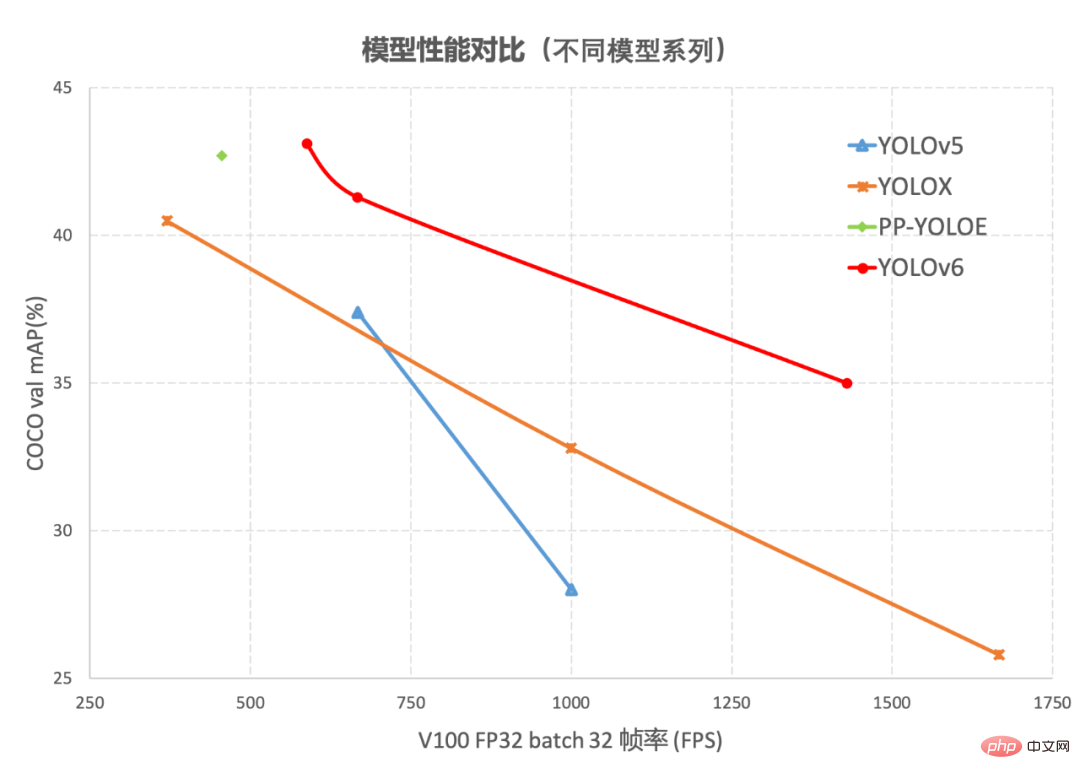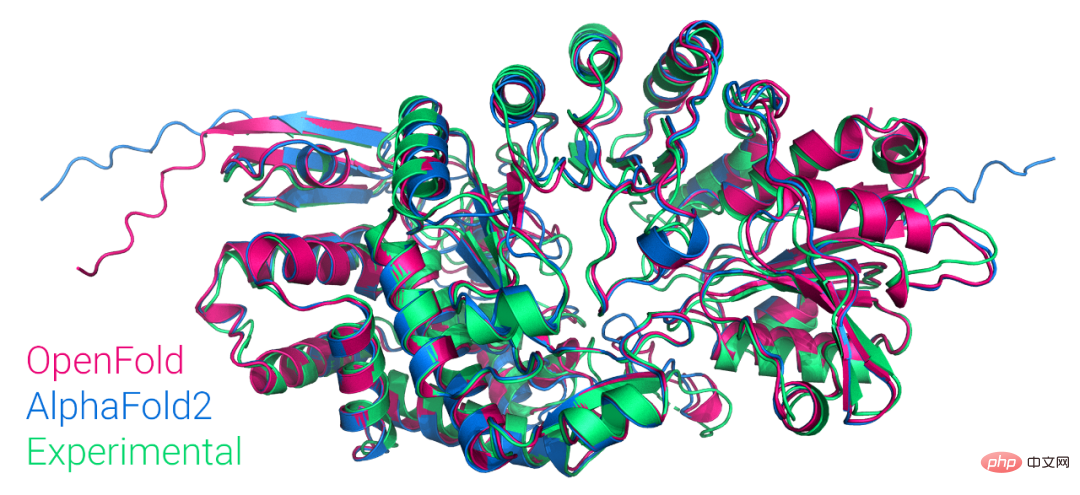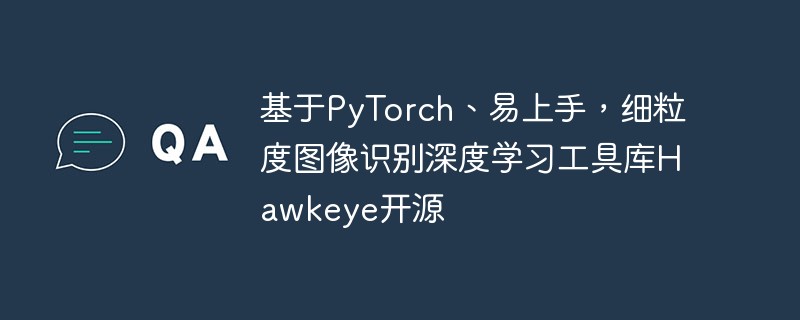
Title: Golang’s open source background and development history
In today’s software development field, a programming language called Golang (also known as Go) has attracted much attention , which quickly gained widespread application and support after its launch by Google. This article will explore the open source background and development history of Golang, and combine it with specific code examples to lead readers to understand this dynamic and potential programming language.
Golang's open source background
Golang is an efficient, reliable, concise and richly parallel processing programming language developed by Google that is oriented to modern programming needs. The original intention of Golang was to solve the problems of traditional programming languages in handling large-scale systems, concurrent programming, etc. In order to better meet Google's own software development needs, Google open sourced its internally developed Go language and opened it to global development. By.
The birth of Golang did not come out of thin air. It inherited the advantages of many traditional programming languages, such as the high performance of C language and the simplicity and readability of Python language. Golang also has its own advantages, such as static type checking, automatic garbage collection, coroutines and other features, making Golang a very suitable language for handling large-scale systems, high concurrency and network programming.
Open source plays an important role in promoting the development of Golang. Through open source, Golang has been able to attract a large number of developers and enthusiasts around the world to participate, promoting the vigorous development of the community, making the Golang ecosystem continue to improve, and has a rich and high-quality open source tool library and framework.
Golang’s development history
Golang has gone through multiple versions of iterative updates since its debut in 2007, constantly absorbing feedback and contributions from the community, and gradually improving and improving its performance and Function. The following is the main development history of Golang:
- 2007: The Golang project was launched and development work was officially launched.
- 2009: Golang was first publicly released, attracting widespread attention and praise.
- 2012: Golang released version 1.0, marking its official entry into the stable stage.
- 2015: Golang released version 1.5, introducing a new design mechanism that supports garbage collection.
- 2018: Golang released version 1.11, officially supporting modular project development.
- 2021: Golang released version 1.17, which introduced generic programming features and further expanded the application scope of Golang.
Golang’s iterative updates always focus on improving performance, simplifying syntax, and enhancing functions, etc., making Golang gradually emerge in the field of software development and be favored by more and more developers.
Code Example: Concurrency and Coroutine
Coroutine (goroutine) in Golang is one of its most distinctive features. Through coroutine, concurrent programming can be easily realized and the performance of the program can be improved. and response speed. The following is a simple example demonstrating how to use coroutines for concurrent calculations:
package main
import (
"fmt"
"time"
)
func calculateSquare(num int) {
result := num * num
fmt.Println("Square of", num, "is", result)
}
func main() {
for i := 1; i <= 5; i++ {
go calculateSquare(i) // 启动一个协程进行计算
}
// 等待协程执行完毕
time.Sleep(time.Second)
}In the above code, a coroutine is started to calculate each The square of the number, thus enabling concurrent execution. Through coroutines, we can use system resources more efficiently and improve the running efficiency of the program. Conclusion
As an open source and dynamic programming language, Golang has made remarkable achievements in a short period of time. Through continuous iterative updates and support from the open source community, Golang has demonstrated unique advantages in handling large-scale systems, high concurrency and network programming, providing software developers with more choices and possibilities. I believe that as Golang continues to develop, it will play an increasingly important role in the future software development field.
By introducing the open source background and development history of Golang, and combining it with specific code examples, this article hopes to provide readers with a more comprehensive understanding of the Golang programming language. I hope Golang will continue to show excellent performance and potential in the field of software development and bring more innovation and convenience to developers.
The above is the detailed content of Golang's open source background and development history. For more information, please follow other related articles on the PHP Chinese website!
 YOLOv6又快又准的目标检测框架已经开源了May 09, 2023 pm 02:52 PM
YOLOv6又快又准的目标检测框架已经开源了May 09, 2023 pm 02:52 PM作者:楚怡、凯衡等近日,美团视觉智能部研发了一款致力于工业应用的目标检测框架YOLOv6,能够同时专注于检测的精度和推理效率。在研发过程中,视觉智能部不断进行了探索和优化,同时吸取借鉴了学术界和工业界的一些前沿进展和科研成果。在目标检测权威数据集COCO上的实验结果显示,YOLOv6在检测精度和速度方面均超越其他同体量的算法,同时支持多种不同平台的部署,极大简化工程部署时的适配工作。特此开源,希望能帮助到更多的同学。1.概述YOLOv6是美团视觉智能部研发的一款目标检测框架,致力于工业应用。
 MLC LLM:开源AI聊天机器人,支持离线运行,适用于集成显卡电脑和iPhone。May 06, 2023 pm 03:46 PM
MLC LLM:开源AI聊天机器人,支持离线运行,适用于集成显卡电脑和iPhone。May 06, 2023 pm 03:46 PM5月2日消息,目前大多数AI聊天机器人都需要连接到云端进行处理,即使可以本地运行的也配置要求极高。那么是否有轻量化的、无需联网的聊天机器人呢?一个名为MLCLLM的全新开源项目已在GitHub上线,完全本地运行无需联网,甚至集显老电脑、苹果iPhone手机都能运行。MLCLLM项目介绍称:“MLCLLM是一种通用解决方案,它允许将任何语言模型本地部署在一组不同的硬件后端和本地应用程序上,此外还有一个高效的框架,供每个人进一步优化自己用例的模型性能。一切都在本地运行,无需服务器支持,并通过手机和笔
 基于开源的 ChatGPT Web UI 项目,快速构建属于自己的 ChatGPT 站点Apr 15, 2023 pm 07:43 PM
基于开源的 ChatGPT Web UI 项目,快速构建属于自己的 ChatGPT 站点Apr 15, 2023 pm 07:43 PM作为一个技术博主,了不起比较喜欢各种折腾,之前给大家介绍过ChatGPT接入微信,钉钉和知识星球(如果没看过的可以翻翻前面的文章),最近再看开源项目的时候,发现了一个ChatGPTWebUI项目。想着刚好之前没有将ChatGPT接入过WebUI,有了这个开源项目可以拿来使用,真是不错,下面是实操的安装步骤,分享给大家。安装官方在Github的项目文档上提供了很多中的安装方式,包括手动安装,docker部署,以及远程部署等方法,了不起在选择部署方式的时候,一开始为了简单想着
 仅需1% Embedding参数,硬件成本降低十倍,开源方案单GPU训练超大推荐模型Apr 12, 2023 pm 03:46 PM
仅需1% Embedding参数,硬件成本降低十倍,开源方案单GPU训练超大推荐模型Apr 12, 2023 pm 03:46 PM深度推荐模型(DLRMs)已经成为深度学习在互联网公司应用的最重要技术场景,如视频推荐、购物搜索、广告推送等流量变现业务,极大改善了用户体验和业务商业价值。但海量的用户和业务数据,频繁地迭代更新需求,以及高昂的训练成本,都对 DLRM 训练提出了严峻挑战。在 DLRM 中,需要先在嵌入表(EmbeddingBags)中进行查表(lookup),再完成下游计算。嵌入表常常贡献 DLRM 中 99% 以上的内存需求,却只贡献 1% 的计算量。借助于 GPU 片上高速内存(High Bandwidth
 用图像对齐所有模态,Meta开源多感官AI基础模型,实现大一统May 11, 2023 pm 07:25 PM
用图像对齐所有模态,Meta开源多感官AI基础模型,实现大一统May 11, 2023 pm 07:25 PM在人类的感官中,一张图片可以将很多体验融合到一起,比如一张海滩图片可以让我们想起海浪的声音、沙子的质地、拂面而来的微风,甚至可以激发创作一首诗的灵感。图像的这种「绑定」(binding)属性通过与自身相关的任何感官体验对齐,为学习视觉特征提供了大量监督来源。理想情况下,对于单个联合嵌入空间,视觉特征应该通过对齐所有感官来学习。然而这需要通过同一组图像来获取所有感官类型和组合的配对数据,显然不可行。最近,很多方法学习与文本、音频等对齐的图像特征。这些方法使用单对模态或者最多几种视觉模态。最终嵌入仅
 Stable Diffusion-XL开启公测,让你摆脱繁琐的长prompt!Apr 23, 2023 am 10:16 AM
Stable Diffusion-XL开启公测,让你摆脱繁琐的长prompt!Apr 23, 2023 am 10:16 AM自从Midjourney发布v5之后,在生成图像的人物真实程度、手指细节等方面都有了显著改善,并且在prompt理解的准确性、审美多样性和语言理解方面也都取得了进步。相比之下,StableDiffusion虽然免费、开源,但每次都要写一大长串的prompt,想生成高质量的图像全靠多次抽卡。最近StabilityAI的官宣,正在研发的StableDiffusionXL开始面向公众测试,目前可以在Clipdrop平台免费试用。试用链接:https://clipdrop.co/stable-diff
 首个大众可用PyTorch版AlphaFold2复现,哥大开源,star量破千Apr 13, 2023 am 09:58 AM
首个大众可用PyTorch版AlphaFold2复现,哥大开源,star量破千Apr 13, 2023 am 09:58 AM刚刚,哥伦比亚大学系统生物学助理教授 Mohammed AlQuraishi 在推特上宣布,他们从头训练了一个名为 OpenFold 的模型,该模型是 AlphaFold2 的可训练 PyTorch 复现版本。Mohammed AlQuraishi 还表示,这是第一个大众可用的 AlphaFold2 复现。AlphaFold2 可以周期性地以原子精度预测蛋白质结构,在技术上利用多序列对齐和深度学习算法设计,并结合关于蛋白质结构的物理和生物学知识提升了预测效果。它实现了 2/3 蛋白质结构预测的卓
 基于PyTorch、易上手,细粒度图像识别深度学习工具库Hawkeye开源Apr 12, 2023 pm 08:43 PM
基于PyTorch、易上手,细粒度图像识别深度学习工具库Hawkeye开源Apr 12, 2023 pm 08:43 PM细粒度图像识别 [1] 是视觉感知学习的重要研究课题,在智能新经济和工业互联网等方面具有巨大应用价值,且在诸多现实场景已有广泛应用…… 鉴于当前领域内尚缺乏该方面的深度学习开源工具库,南京理工大学魏秀参教授团队用时近一年时间,开发、打磨、完成了 Hawkeye——细粒度图像识别深度学习开源工具库,供相关领域研究人员和工程师参考使用。本文是对 Hawkeye 的详细介绍。1.什么是 Hawkeye 库Hawkeye 是一个基于 PyTorch 的细粒度图像识别深度学习工具库,专为相关领域研究人员和


Hot AI Tools

Undresser.AI Undress
AI-powered app for creating realistic nude photos

AI Clothes Remover
Online AI tool for removing clothes from photos.

Undress AI Tool
Undress images for free

Clothoff.io
AI clothes remover

AI Hentai Generator
Generate AI Hentai for free.

Hot Article

Hot Tools

Safe Exam Browser
Safe Exam Browser is a secure browser environment for taking online exams securely. This software turns any computer into a secure workstation. It controls access to any utility and prevents students from using unauthorized resources.

SecLists
SecLists is the ultimate security tester's companion. It is a collection of various types of lists that are frequently used during security assessments, all in one place. SecLists helps make security testing more efficient and productive by conveniently providing all the lists a security tester might need. List types include usernames, passwords, URLs, fuzzing payloads, sensitive data patterns, web shells, and more. The tester can simply pull this repository onto a new test machine and he will have access to every type of list he needs.

SublimeText3 Mac version
God-level code editing software (SublimeText3)

ZendStudio 13.5.1 Mac
Powerful PHP integrated development environment

SublimeText3 English version
Recommended: Win version, supports code prompts!







